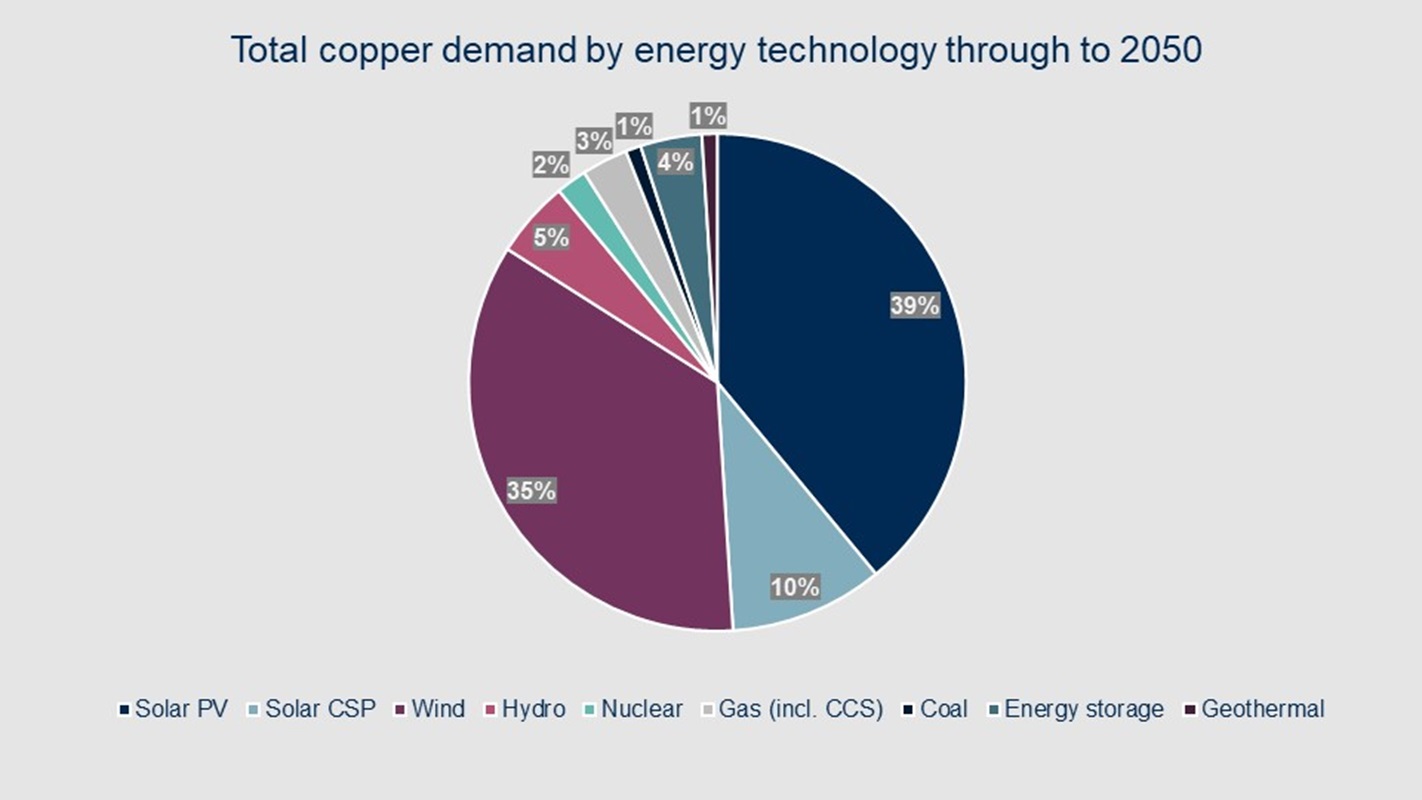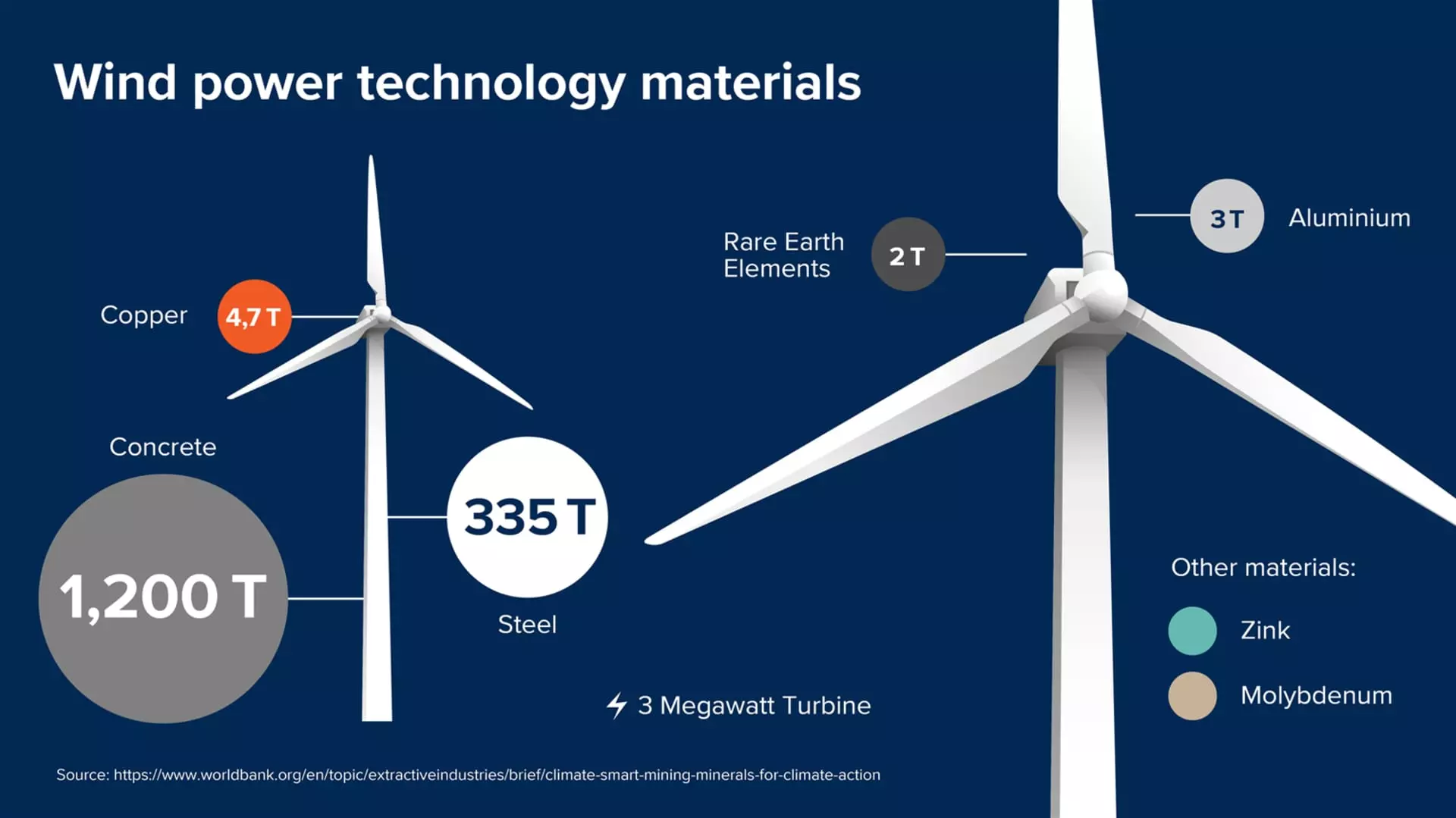With a variety of critical minerals needed for wind turbine production, mining has a central role to play in this transition. But with mining also contributing between 4-7% of global CO₂ emissions, we must ensure, through initiatives such as MissionZero, that the mining industry minimises its environmental impact, writes Fleming Voetmann, Vice President, Sustainability.
To make the green energy transition a reality, a substantial increase in wind energy is needed by 2050. This will require a massive increase in investment levels globally, an adequate transmission infrastructure and, of course, the ability of the mining industry to meet the growing demand for the minerals needed for wind turbines.
And if we as an industry are committed to a low-carbon, sustainable future, the onus is on us to provide the crucial minerals in the most green and sustainable manner possible. Our core business and sustainability strategy, MissionZero, has this very objective at its core.
Mining needs the ability to react to the likelihood of fast-growing demand
In the scenario where wind energy covers more than one-third of global power needs, the world’s installed wind power capacity must reach 6 000 gigawatts – over 10 times the current level – by 2050. That involves 5 000 GW of onshore wind and 1 000 GW of offshore wind. It also means increased investment – according to the International Renewable Energy Agency (2) – in onshore wind will need to triple from USD 67 billion in 2018 to USD 211 billion globally in 2050, while offshore investment in wind needs to quintuple, from USD 19 billion in 2018 to USD 100 billion in 2050 (3).
This substantial level of investment fuelling a swift increase in wind capacity, will create massive opportunities for the mining industry. But with it comes the requirement for the mining industry to be able to sustainably provide the minerals and vital metals needed for wind turbines and wind farms, globally.

What is the role of mining in the green energy transition?
A single 3 MW wind turbine (approximately 150m in height) requires 4.7 tonnes of copper, 335 tons of steel and 1,200 tons of concrete. It also needs 2 tons of rare earth elements and 3 tons of aluminium, as well as lesser amounts of zinc and molybdenum. And this does not even include the potential growth of battery-based energy storage solutions, which currently require cobalt, lithium and nickel, amongst others.
A World Bank statistic states that over the last 500 years about 500 m/t of copper has been produced – and that the world will need about the same amount over the next 25 years to meet new global demand, driving by the clean energy transition (4). In the same 2020 report, "Minerals for Climate Action: "The Mineral Intensity of the Clean Energy Transition," the World Bank states how the “production of minerals, such as graphite, lithium and cobalt, could increase by nearly 500% by 2050, to meet the growing demand for clean energy technologies”. It goes on to estimate that over 3 billion tons of minerals and metals will be for wind, solar and geothermal power and energy storage if we are to achieve a below 2°C future.

A massive opportunity – and challenge – for mining
The question facing mining is very straightforward – how do we increase the amount of these minerals extracted while lowering our environmental impact? The answer, however, is riddled with complexity.
The main challenge in delivering the minerals demanded by society while decreasing the environmental footprint is declining ore grades. This has direct implications for the amounts of water and energy needed for production, increasing the environmental footprint of the mine. Add into the mix tightening regulations around resource use – especially water in areas of scarcity – and it becomes obvious that mining’s modus operandi needs to change to avoid new risks and costs, as well as to cut impact on the environment.
Mission impossible? Not if we can deliver on MissionZero
We launched MissionZero to respond to this challenge. Providing the complex answer to this quandary is necessary and it is sound business for us and our customers. With increasingly efficient equipment, water reuse solutions, and a strong digital portfolio, we are well placed to be the go-to-partner for sustainable productivity, and to meet customers challenges, such as increasing costs and risk, tighter regulations and changing societal expectations. MissionZero goes beyond what is currently achievable, so if we are to deliver the minerals needed for clean energy, we must work together as an industry to co-create and ensure adoption of solutions that will transform mining into a more sustainable industry.
| Metal | Geared | Direct drive |
|---|---|---|
| Aluminium | ✓ |
✓ |
| Chromium | ✓ | ✓ |
| Copper | ✓ | ✓ |
| Iron | ✓ | ✓ |
| Lead | ✓ | |
| Manganese | ✓ | ✓ |
| Neodymium | ✓ | |
| Nickel | ✓ | ✓ |
| Steel | ✓ | ✓ |
| Zinc | ✓ | ✓ |
Discover more about Mission Zero >>
Sources
1. United Nations Environment Programme (UNEP) (2019), New report envisages 10-fold increase in global wind power by 2050. United Nations Environment Programme, Kenya: Link
2. International Renewable Energy Agency IRENA (2019), Future of wind: Deployment, investment, technology, grid integration and socio-economic aspects (A Global Energy Transformation paper). International Renewable Energy Agency, Abu Dhabi: Link
3. International Energy Agency (2019), World Energy Outlook 2019, Executive Summary. International Energy Agency, Paris: Link
4. World Bank Group (2020), Minerals for Climate Action: "The Mineral Intensity of the Clean Energy Transition. International Bank for Reconstruction and Development/ The World Bank, Washington DC: Link